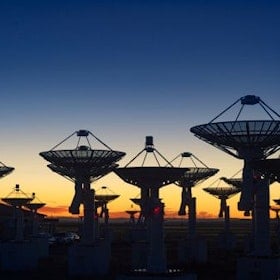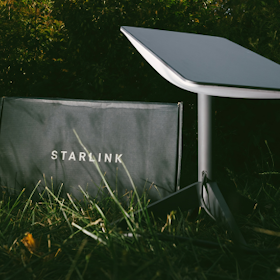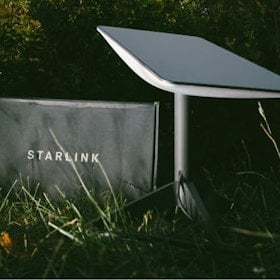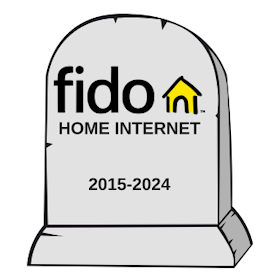
If you're here, it means you're looking to learn how to stream on Twitch. Maybe you're looking to become a famous content creator or a Twitch Partner. Maybe you've only got a single viewer in mind. Wherever you fall, we've got everything you need to know about how to stream on Twitch.
Twitch streaming requires setting up an account, configuring broadcast software, and a few necessary pieces of hardware so you can communicate with your audience. With its millions of viewers, Twitch is an excellent platform to grow an audience by sharing content you create.
Learn everything you need to know in our ultimate guide to Twitch streaming.
What you'll need to stream to Twitch
For Twitch streaming, there are a few things you’ll need:
- A Twitch account
- Broadcast software (i.e., OBS Studio, Streamlabs OBS, XSplit, vMix)
- PC or console to stream from
- Media hardware (i.e., microphone, webcam, capture card, ring light, headset, etc.)
- a fast and reliable fibre or cable internet connection.
That last point might be the most important: Twitch recommends a high speed internet plan to avoid latency issues. Telus' PureFibre 3.0 Gigabit Internet is the best internet plan for gaming in Canada based on data gathered from our internet speed test.
Find that plan, along with other high-powered fibre internet plans, below.
How to stream to Twitch
Sign in to or create your Twitch.tv account, and you’ll be ready to set up your streaming software. We recommend either Twitch Studio or Open Broadcaster Software (OBS) to stream to Twitch’s site.
Twitch Studio integrates Twitch community features like chat and automatic game detection. It’s a user-friendly choice if you predominantly plan to stream to Twitch and want the setup to be quick. However, Twitch Studio is limited to, well, Twitch streaming. Additionally, it’s not quite as customizable as other streaming platforms.
As an alternative, OBS can stream your content to Twitch and works for other platforms like YouTube or Facebook. It’s a free, open-source, and robust application. If you’re a power user, OBS may be right for you. You'll enjoy flexible video production views, tons of available plugins, and compatibility with a slew of streaming video services.
Set up Twitch Studio

Here’s how to install Twitch Studio (skip to the next section if you’d rather use OBS):
- Head over to Twitch.tv and log in to your account.
- Click on your profile icon in the top right-hand corner of the screen.
- Select Creator Dashboard and click the button to Download Twitch Studio.
- Fire up the Twitch Studio installer and press Install.
- Click Continue if your Twitch account info fills in, but if not, log in.
- Press Activate in the new window that appears with an activation code.
- Log in to your Twitch account when prompted.
- Enter your login confirmation code and authorize Twitch Studio to link to your account.
- Choose Get Started and pick your microphone.
- Select Continue to Scenes and review scene information.
- Press Continue to Settings and input your desired stream quality settings.
- Click Continue to App, and you should now see your creator dashboard.
The creator dashboard is where you can customize different streams and tweak settings.
Connect Twitch with OBS
Here’s how to stream to Twitch using OBS:
- Install and fire up OBS. If you need to install Open Broadcaster Software, you can download it from the OBS Project website.
- Navigate to Settings in the bottom right-hand corner of the screen or head to File > Settings from the top left-hand drop-down menu.
- Hit Stream and choose Twitch as your streaming platform.
- Select Connect Account and input your Twitch account login information.
- Click Authorize to allow OBS Studio to access your Twitch account.
Alternatively, you can sync Twitch with OBS using a stream key:
- Open a web browser and log in to Twitch.
- Click your profile icon in the top right-hand corner and pick Creator Dashboard.
- Navigate to Settings > Stream > Copy Primary Stream Key.
- Open OBS and head to File > Settings > Stream > Twitch.
- Click Use Stream Key and paste your key in the box, then hit Apply.
After that, OBS will have a connection to your Twitch account. You’ll see options to choose a different streaming platform, pick a server manually, enable bandwidth test mode, use a Twitch chat add-on, or ignore streaming service settings.
Configure Open Broadcaster Software
With Twitch connected to OBS, you’ll need to set up Open Broadcaster Software. You can set the base resolution (the size of the display you want to capture), output resolution (the size of the video you want to scream), downscale filter (video compression), and frame per second value through the OBS settings. Here’s how:
- Head to File > Settings and pick Video.
- Select your desired video settings, then tap Apply.
- Click Audio and set your preferred audio devices such as microphones or desktop audio streams, then select Apply.
- Head to Output to pick your preferred output mode, video bitrate, encoder, audio bitrate, recording path, etc.
- Hit Apply when finished.
Adding OBS scenes and sources
After configuring Open Broadcaster Software’s streaming settings, you’ll need to add your scenes and sources. These are the configuration settings for your different devices (i.e., microphone, webcam, and game capture device) that you can swap between. Here’s how to set them up:
- Under Scenes, click the Plus (+) symbol to create a scene. Give your scene a name if you so choose.
- Click on that scene to select it, then add some sources by hitting the Plus sign under Sources.
- Add whatever sources you need. Options include Audio input capture, Game capture, Video capture device, and Window capture. You can add multiple devices.
Let’s look at a real-world example. I streamed a PC game running on the same computer as my OBS program. Since I used a standalone webcam and a dedicated microphone, I needed three sources:
- Audio Input Capture (microphone)
- Video Capture Device (webcam)
- Game Capture (PC game running locally on my machine)
If you’re streaming gameplay from a console such as the Nintendo Switch, Xbox One, Xbox Series X, PlayStation 4, or PlayStation 5, you’ll need a capture card. Here’s what my sources were for live streaming footage from my PlayStation 3:
- Audio Input Capture (microphone)
- Video Capture Device (webcam)
- Video Capture Device (capture card)
Once you’ve added your scenes and sources, you can resize windows and move them around as you desire. For instance, I resized my windows to have my head in the corner of the screen for viewers to see me while streaming.
Suggested Twitch streaming software
While Twitch’s own client and OBS are solid options for broadcast software, there are other options out there, like:
- Streamlabs Studio: Built on the same platform as OBS, this option features a built-in chat, so you don’t need multiple windows open.
- XSplit: You’ll find premium features in XSplit, such as a green screen function for creating virtual backdrops, low light adjustment, and noise reduction. However, many of XSplit’s best options require payment.
- vMix: With advanced settings such studio-calibre high-definition with 3D acceleration and professional colour correction, vMix is great for seasoned streamers. Unfortunately, the free tier comes with limited inputs and other restrictions.
Recommended streaming equipment
While it’s essential to have the right software for Twitch streaming, you’ll need the proper hardware as well. Here's our top gear for streaming from microphones and headsets to webcams, lighting, and capture cards.
Best microphones for Twitch streaming
A microphone is a must-have for communicating with your audience on Twitch and your in-game teammates. You can find a slew of different microphones for streaming and gaming. We recommend a USB mic and a cardioid polar pattern to pick up your voice better. Our favourite mics for Twitch streaming include:
- Blue Yeti: Multiple polar patterns (cardioid, omnidirectional, stereo, bidirectional), USB connectivity
- Razer Seiren Mini: Supercardioid polar pattern, USB connectivity
Best headsets for streaming
A headset is a must-have for listening to in-game audio without your microphone picking it up. Many gaming headsets also include built-in mics, in case you don’t have a standalone option. Our top picks are:
- HyperX Cloud Alpha S: Detachable noise-cancellation microphone, in-line audio controls, 7.1 virtual surround sound, 3.5mm/USB
- Astro A50: Fixed mic, onboard game- and voice-balance controls, USB connectivity
- Logitech G Pro X: Detachable microphone with noise reduction technology, 7.1 virtual surround sound, USB/3.5mm headphone jack
- Audeze Mobius: Built-in detachable microphone with noise attenuation, 3D head tracking, simulated surround sound, USB/Bluetooth/3.5mm headphone jack
Best webcams for streaming Twitch
Are you planning to be on camera? If so, you’ll need a webcam. While most laptops have built-in cameras, a dedicated webcam provides better video quality. Look for a 1080p or 4K resolution. Here are our recommended webcams for Twitch streams:
- Logitech Brio 4K: 4K ultra-high-definition video quality, up to 90 FPS frame rate, adjustable field of view up to 90-degrees, auto light correction, dual noise-cancelling mics
- Logitech C922x HD Pro: 1080p 30 FPS or 720p 60 FPS resolutions, dual built-in mics, automatic light correction, 78-degree field of view optimized for streaming
- Razer Kiyo Pro: 1080p 30 FPS or 720p 60 FPS streaming/recording, autofocus, built-in mic, integrated ring light
- Anker PowerConf C300: 1080p 60 FPS video quality, artificial intelligence-powered light correction, two noise cancellation mics
Optional but recommended streaming accessories
Technically, all you need to get started streaming on Twitch is a video source, mic, Twitch account, and some broadcast software. However, a few accessories make your live streams more professional. For instance, ring lights provide improved illumination to help you look better on camera (unless you’re me, in which case, nothing can help you look better). Our favourite lighting options for streaming include Elgato key lights, UBeesize ring lights, and Neewer softboxes.
A stream deck is another accessory that simplifies your workflow with physical buttons to switch cameras, scenes, lights, mute your mic, and more. We suggest the Elgato Stream Deck XL or Loupedeck Live.
Best capture cards for Twitch streaming
Depending on what video and audio you’re broadcasting, you may require a capture card. For instance, streaming from a console such as the PlayStation 5, Xbox Series X, or Nintendo Switch necessitates a capture device. Here are the capture cards we suggest:
- AverMedia Live Gamer Portable 2 Plus: 4K video passthrough, 1080p 60 FPS recording, microSD card or USB recording
- Elgato HD60 S+: 4K 60 FPS with HDR10 video recording, low lag video passthrough
- Razer Ripsaw HD: 4K 60 FPS video passthrough, 1080p 60 FPS recording, low-latency video
- ClonerAlliance Flint 4KP Plus: 4K 60 FPS video passthrough, 1080p 60 FPS recording, low-latency video
How to stream to Twitch: FAQs
Related Articles
Find Better Internet and Phone Plans
Hundreds of internet plans unpacked. All the facts. No surprises.
Internet Providers by Provinces and Territories
- Internet in Alberta
- Internet in British Columbia
- Internet in Manitoba
- Internet in New Brunswick
- Internet in Newfoundland and Labrador
- Internet in Northwest Territories
- Internet in Nova Scotia
- Internet in Nunavut
- Internet in Ontario
- Internet in Prince Edward Island
- Internet in Quebec
- Internet in Saskatchewan
- Internet in Yukon Territory
















































